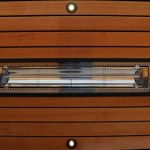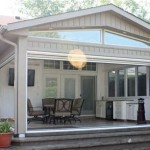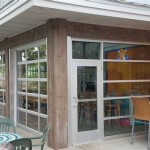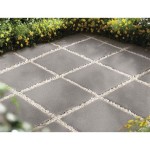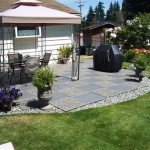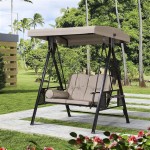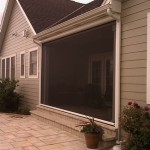Making The Most Of Your Patio Fire Pit Propane Gas Regulator
The patio fire pit has become a staple in outdoor living spaces, offering warmth, ambiance, and a gathering point for friends and family. At the heart of a propane-fueled fire pit lies a crucial component: the propane gas regulator. This unassuming device plays a vital role in ensuring safe and efficient operation. Understanding the function of the regulator and how to properly maintain it is essential for maximizing the lifespan and performance of a propane fire pit while prioritizing safety.
A propane gas regulator's primary function is to reduce the high pressure of propane gas stored in the tank to a lower, more manageable pressure suitable for combustion in the fire pit burner. Propane tanks typically store gas at pressures ranging from 100 to 200 psi, depending on temperature. Fire pit burners, however, are designed to operate at much lower pressures, typically measured in inches of water column (WC), often around 11 inches WC. The regulator acts as a pressure reducing valve, precisely controlling the gas flow to the burner and preventing excessive pressure that could lead to dangerous situations such as uncontrolled flames, leaks, or even explosions.
Without a properly functioning regulator, the fire pit would be inherently unsafe. High-pressure gas directly entering the burner could cause a significantly larger and more volatile flame than intended, posing a risk of injury or property damage. The regulator ensures a consistent and controlled flame, providing a comfortable and safe outdoor environment.
Beyond safety, the propane gas regulator also contributes to the efficiency of the fire pit. By delivering gas at the optimal pressure, the regulator ensures complete combustion of the propane. This process leads to cleaner burning, maximizing the heat output while minimizing the production of soot and other undesirable byproducts. A properly regulated fire pit will burn more efficiently, consuming less propane and extending the life of a propane tank. In contrast, a malfunctioning or improperly adjusted regulator could result in incomplete combustion, leading to wasted fuel, reduced heat, and increased emissions.
Understanding the Components of a Propane Gas Regulator
A typical propane gas regulator for a patio fire pit consists of several key components working in coordinated fashion. These include the inlet connection, the diaphragm, the spring, the valve, and the outlet connection. The inlet connection securely attaches the regulator to the propane tank valve. This connection is often a POL (Prest-O-Lite) fitting, designed to create a leak-proof seal. The diaphragm is a flexible membrane that responds to pressure changes in both the inlet and outlet sides of the regulator. It is connected to the valve, which controls the flow of propane gas.
The spring provides a counterforce against the diaphragm, allowing the regulator to maintain a consistent outlet pressure. The spring tension can be adjusted on some regulators, allowing for fine-tuning of the outlet pressure. The valve opens and closes in response to the movement of the diaphragm, regulating the flow of propane gas. The outlet connection connects the regulator to the gas supply line leading to the fire pit burner. This connection is typically a threaded fitting, ensuring a secure and leak-proof connection.
The functionality of the regulator is based on a feedback loop involving all these components. When the fire pit is turned on, the burner requires propane gas. This demand causes a slight drop in pressure on the outlet side of the regulator. The diaphragm senses this pressure drop and flexes, allowing the valve to open further, increasing the flow of propane from the tank. As the burner consumes propane, the outlet pressure is maintained at the desired level. If the outlet pressure rises above the setpoint, the diaphragm flexes in the opposite direction, closing the valve slightly and reducing the flow of propane. This dynamic process ensures that the burner receives a consistent and stable supply of propane gas at the correct pressure.
Regulators are classified based on their capacity, which is typically measured in BTU/hour (British Thermal Units per hour). The capacity of the regulator should be appropriately sized for the BTU rating of the fire pit burner. Using an undersized regulator can restrict gas flow and reduce the burner's performance, while an oversized regulator may not provide sufficiently precise pressure control. It is important to consult the fire pit's specifications or the manufacturer's recommendations to choose the correct regulator size.
Recognizing Signs of Regulator Malfunction
Like any mechanical device, propane gas regulators are susceptible to wear and tear over time. It is important to be aware of the common signs indicating a potential malfunction. One of the most obvious signs is an inconsistent flame height. If the flame fluctuates erratically, shrinks unexpectedly, or appears weak, it could indicate a problem with the regulator's ability to maintain consistent outlet pressure. Another sign is difficulty lighting the fire pit. If the burner repeatedly fails to ignite or requires multiple attempts, it could be due to insufficient gas flow caused by a faulty regulator.
The presence of a hissing sound emanating from the regulator can also indicate a leak. This hissing sound may be accompanied by the smell of propane, which is a strong indicator of a gas leak. It is important to immediately shut off the propane tank valve if a leak is suspected and to inspect the regulator connections for damage or looseness. Soot accumulation around the burner is another potential sign of regulator malfunction. Incomplete combustion due to improper pressure can cause excessive soot buildup. This accumulation can clog the burner ports and further reduce the fire pit's performance. Finally, visible damage to the regulator, such as cracks, dents, or corrosion, warrants immediate replacement.
Addressing these issues promptly is crucial in preventing further damage or hazardous situations. Ignoring these signs can lead to more significant problems, including fire hazards and equipment failure. Regular inspection of the regulator and associated components can help identify potential problems early on, allowing for timely replacement or repair.
Best Practices for Maintenance and Safety
Proper maintenance is essential for ensuring the longevity and safe operation of a propane gas regulator. Regular visual inspections of the regulator, connections, and gas lines are highly recommended. These inspections should be performed before each use of the fire pit. Check for any signs of damage, such as cracks, dents, corrosion, or loose connections. Tighten any loose connections with a wrench. Always use the correct size wrench to avoid damaging the fittings.
Leak testing is an important safety precaution. Applying a soapy water solution around the regulator connections and gas lines can help detect leaks. If bubbles form when the propane is turned on, it indicates a leak. Immediately shut off the propane tank valve and tighten the connections or replace any damaged components. Never use an open flame to check for gas leaks. This practice is extremely dangerous and can result in a fire or explosion.
Protecting the regulator from the elements is also crucial. Exposure to rain, snow, and sunlight can accelerate wear and tear. Consider covering the fire pit when not in use or storing the regulator in a dry, protected location. Avoid exposing the regulator to extreme temperatures. High temperatures can damage the internal components of the regulator, while freezing temperatures can cause condensation and corrosion. When replacing a regulator, use only regulators that are specifically designed and approved for use with propane fire pits. Using the wrong type of regulator can result in improper operation and safety hazards.
Ensure the replacement regulator has the correct capacity (BTU/hour) for the fire pit burner. Consult the appliance documentation or manufacturer's recommendations to determine the appropriate regulator size. Regularly clean the burner and surrounding area to remove any debris that could obstruct gas flow. A clogged burner can strain the regulator and reduce its efficiency. When disconnecting the regulator from the propane tank, always close the tank valve tightly. Store the propane tank in a well-ventilated area away from heat sources and ignition sources. Never store propane tanks indoors or in enclosed spaces. Properly disposed of old or damaged regulators according to local regulations and guidelines.
By adhering to these maintenance and safety best practices, users can significantly extend the lifespan of their propane gas regulator and enjoy their patio fire pit with peace of mind. A well-maintained regulator ensures safe, efficient, and reliable performance, providing years of enjoyment and warmth.

A Quick Guide To Gas Fire Pits Everything You Need Know

How To Build A Fire Pit Kit With Propane Tank Firepits Direct Learning Center

All You Need To Know About Gas Regulators For Outdoor Fire Pits

How To Build A Gas Fire Pit Coffee Table Firepits Direct Learning Center

Connecting A Propane Fire Pit Easy Setup And Safety Tips Montana Pits

How To Install A Fire Pit On Deck Patio Or Porch Firepits Direct Learning Center

How Hot Do Gas Fire Pits Get Steel Concrete And Safety Tips Montana

How To Build A Gas Fire Pit Coffee Table Firepits Direct Learning Center

56 In Rectangle Fire Pit Table With 10 Sq Ft Regulator Gas Hose Lava Stones Battery And Water Resistant Cover Ch6tp517 The Home Depot

5 Best Propane Fire Pits Tested And Reviewed Family Handyman
Related Posts

